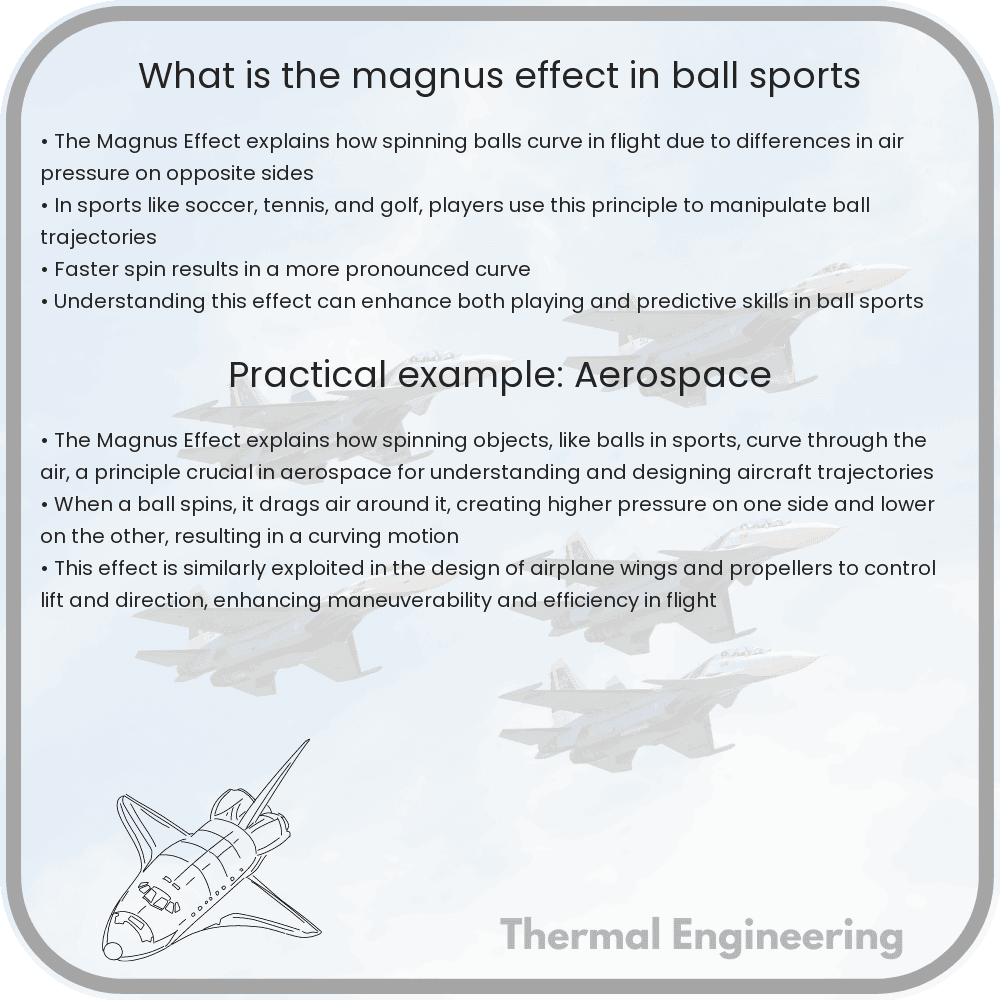Learn how the Magnus effect influences ball trajectories in sports by altering airflow and pressure around a spinning ball.

Understanding the Magnus Effect in Ball Sports
The Magnus effect is a physical phenomenon that has a significant impact on ball sports, influencing the trajectory and motion of spinning balls. Named after German physicist Heinrich Gustav Magnus, who described it in 1852, the Magnus effect helps explain the unexpected curves that balls exhibit in sports such as soccer, tennis, and baseball.
Physics Behind the Magnus Effect
When a ball is thrown or kicked with a spin, the rotation of the ball affects the air flow around it. Air flows faster on one side of the spinning ball and slower on the opposite side due to the spin. According to Bernoulli’s principle, faster airflow decreases the air pressure. Thus, on the side of the ball where the air moves quickly, the pressure is reduced. As a result, a pressure gradient is created towards the side of the ball with higher pressure, pushing the ball in that direction. This deflection in the flight path of the ball is what’s observed as the Magnus effect.
To visualize this, consider a soccer player curving the ball during a free kick. If the ball spins counter-clockwise from the player’s perspective, the left side of the ball would push the air faster, creating low pressure, and the ball curves to the left.
Mathematical Representation
The force exerted by the Magnus effect can be mathematically represented by:
F M = k * v * ω
- FM is the Magnus force.
- k represents a constant that includes factors like air density and the cross-sectional area of the ball.
- v is the velocity of the ball.
- ω (omega) is the angular velocity of the ball’s spin.
Applications in Sports
- Soccer: Players utilize the Magnus effect to bend the ball around a wall of defenders and into the goal.
- Tennis: Topspin and backspin are techniques that leverage the Magnus effect to control the ball’s bounce and trajectory.
- Baseball: Pitchers throw curveballs that use the Magnus effect to drop or deviate the ball unexpectedly, deceiving the batter.
- Golf: Golfers apply spins to control the ball’s flight path and landing behavior.
Practical Learning and Training
To master the use of the Magnus effect in sports, athletes typically go through extensive practice to fine-tune their technique. Understanding and predicting the effect requires practical experience, often supported by high-speed video analysis to observe the exact path of the ball and its spin.
In conclusion, the Magnus effect is a fascinating and complex phenomenon that adds depth to the gameplay in various ball sports, allowing players to exhibit greater skill and strategy. By mastering the Magnus effect, athletes can manipulate the ball in ways that might seem counterintuitive, showcasing the beautiful interplay between physics and sports.